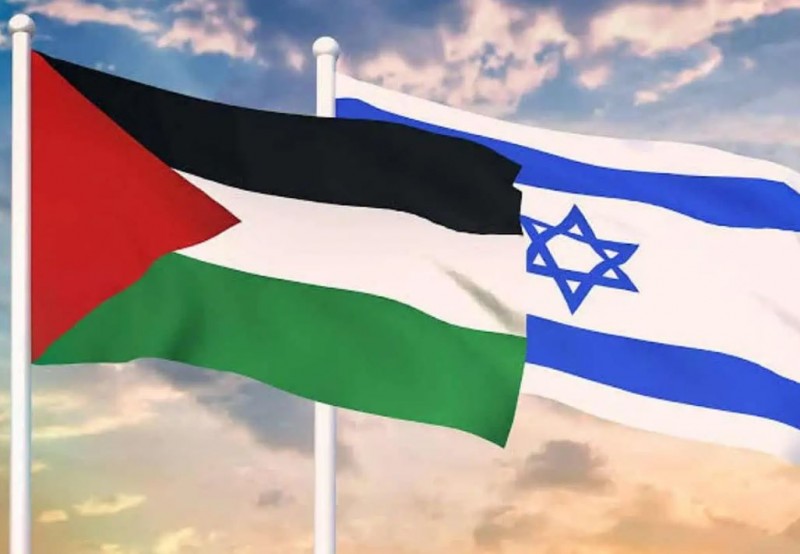
The region known as the Levant, located in Western Asia and the Eastern Mediterranean, has a history dating back to around 10,000 to 4,500 BCE, with evidence of human settlements. During the Bronze Age, this area was ruled by the Egyptian Canaanite states. It is believed that the Jewish community originated from a branch of these Canaanite people, who were monotheistic believers. Their descendants established a kingdom in this region around 900 BCE, which is often referred to as the United Kingdom of the Jews.
During the Bronze Age, another community known as the Philistines lived in the same region. Archaeological findings suggest that they were of Greek origin and practiced polytheism, which led to conflicts with the monotheistic Jewish community. The Philistine state was eventually absorbed by the Egyptian empire, and the remaining people integrated into the local communities. Throughout history, the Jewish population faced multiple periods of displacement due to invasions by the Neo-Assyrian and Neo-Babylonian empires. These challenges and conflicts shaped the history of the Jewish people in the Levant.
The Modern Conflict Begins
In 1917, British officer Arthur Balfour declared Britain's intention to create a homeland for Jews in the region, which was under Ottoman rule at the time. Arab residents of the area considered it as Palestine, while Jews saw it as an opportunity to revive their cultural heritage, which had been preserved for thousands of years. This sparked tensions and conflicts, as the Palestinian nationalist movement emerged in response to the Zionist movement's aspirations. The weakened Arab states were unable to prevent Jewish immigration to the region. The Holocaust, perpetrated by the Nazis in Europe, led to a significant influx of Jewish refugees into the area, further fueling tensions. Arab communities opposed the migration, but their limited power could not stop it.
The UN Proposal and the Establishment of Israel
In 1947, the United Nations passed a resolution proposing the partition of Palestine into separate Arab and Jewish states, with Jerusalem as an international city. This plan exacerbated the conflict, leading to violence and the Arab-Israeli War of 1948. In May 1948, the Jewish leadership declared the establishment of the State of Israel, and war broke out. Israel emerged victorious, but the conflict resulted in the loss of lives on both sides. The aftermath of the 1948 war led to the division of the disputed territories into Israeli, Jordanian, and Egyptian control, with ongoing tensions and hostilities.
Failed Peace Efforts
Numerous peace initiatives and negotiations have been attempted to resolve the conflict, including the Oslo Accords in 1993, the Camp David Summit in 2000, the Taba Summit in 2001, and the Arab Peace Initiative in 2007. However, none of these efforts succeeded in bringing a lasting resolution to the conflict, as violence and distrust persisted. One of the major obstacles to peace has been the presence of groups like Hamas, which engage in acts of terrorism against Israeli civilians. The conflict in the region remains a complex and deeply rooted issue, with no easy solutions in sight.
Historical Background
In the late 19th century, Jewish immigration to Jerusalem and the surrounding areas began to increase. The aftermath of World War I brought favorable conditions for the Jewish community's aspirations. In December 1917, British forces captured Jerusalem, ending Ottoman rule in the region.
The Six-Day War and Its Aftermath
The Third Arab-Israeli War, known as the Six-Day War, took place in June 1967. Israel emerged as the victor, securing control over East Jerusalem, the West Bank, Gaza Strip, the Golan Heights, and the Sinai Peninsula. This victory significantly expanded Israel's territory, and it continued to be a powerful nation in the region. The peace process between Israel and its neighbors has been challenging. The issue of Israeli settlements in the West Bank and Gaza Strip, as well as the status of Jerusalem, has been contentious and a major hurdle to peace negotiations.
Current Situation
As of 2021, the West Bank and Gaza Strip are home to approximately 12 million people, with roughly equal numbers of Jews and Arabs living in these territories. The population is divided between the Palestinian Authority-controlled areas and Israeli-administered regions, leading to ongoing conflicts and violence.
Efforts for a Two-State Solution and the Future
The concept of a two-state solution, with Israel and Palestine coexisting as separate, independent states, has been the focus of international efforts to resolve the conflict. However, achieving this solution has proven to be extremely challenging, as both sides have deep-rooted historical and territorial claims.
In recent years, tensions have escalated, with periodic outbreaks of violence, protests, and clashes. The situation remains highly complex, and the path to a peaceful resolution remains uncertain.
In conclusion, the history of the Israeli-Palestinian conflict is deeply intertwined with the history of the Levant, dating back thousands of years. The struggle for control of this region has involved numerous empires, religions, and ethnic groups. Despite numerous peace initiatives and negotiations, the conflict persists, and achieving a lasting resolution remains a complex and challenging task.
World Mental Health Day: Crucial Link Between Work-Life Balance and Mental Health
Kohli and Rahul Shine as India Triumph Over Aussies in World Cup Opener
Egyptian Policeman Opens Fire on Israeli Tourists in Alexandria, Resulting in Casualties